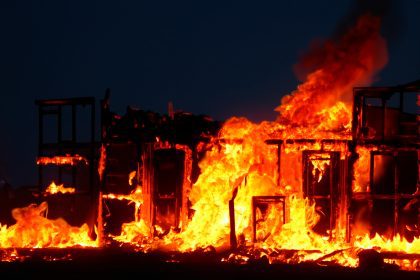Historic wildfires ravage more than 20,000 acres across Los Angeles County, displacing thousands of residents and highlighting critical gaps in emergency preparedness. The crisis unfolds against a backdrop of controversial fire department budget reductions and leadership decisions that have left many communities vulnerable.
Budget decisions impact emergency response capabilities
According to an opinion piece on The Root, The Los Angeles City Council and administration implemented a $17.6 million reduction in fire department funding for fiscal year 2024-2025, marking a significant shift from the previous year’s budget exceeding $860 million. While the revised budget maintains support for firefighter recruitment and wildfire management initiatives, the practical impact of these cuts manifests in reduced operational readiness during critical emergency situations.
Emergency response personnel report significant operational constraints resulting from the reduced funding. The department’s ability to mobilize resources and implement preventative measures — particularly during high-risk weather conditions — has been notably diminished. The timing of these reductions — coupled with additional requested cost-saving measures — has created substantial challenges in maintaining optimal emergency response capabilities.
Leadership absence draws community concern
The mayor’s diplomatic trip to Ghana during the onset of the wildfires has intensified public discourse about leadership priorities. The decision to travel abroad despite advanced weather warnings about dangerous fire conditions has resonated particularly strongly within communities most affected by the disaster.
Upon returning to Los Angeles, city leadership attempted to contextualize the crisis within broader environmental challenges, citing prolonged drought conditions as a contributing factor. However, this explanation has done little to assuage concerns about emergency preparedness and response coordination during critical incidents.
Communities face unprecedented displacement
The devastating impact of these fires extends far beyond property damage, with over 1,000 homes destroyed and more than 100,000 residents forced to evacuate. The crisis has particularly affected historically underserved neighborhoods, where emergency resources and evacuation support systems have proven insufficient to meet community needs.
This disaster highlights persistent disparities in emergency preparedness and response capabilities across different Los Angeles communities. Many residents express concern about the equitable distribution of emergency resources and the need for comprehensive disaster response planning that considers the unique needs of diverse neighborhoods.
Addressing systemic challenges
The current crisis serves as a crucial moment for reassessing emergency response systems and resource allocation in Los Angeles. As climate change increases the frequency and intensity of natural disasters, the city must develop more robust and equitable emergency response frameworks.
The intersection of budget decisions, leadership accountability and community impact demands a thorough evaluation of current policies and practices. Ensuring adequate funding for emergency services and maintaining strong leadership presence during crises emerge as critical priorities for protecting all Los Angeles communities, particularly those historically vulnerable to natural disasters.
The path forward requires meaningful engagement with affected communities, strategic resource allocation and committed leadership focused on building resilient emergency response systems that serve all residents effectively. This crisis presents an opportunity to address systemic inequities in disaster preparedness and response, ensuring that future emergencies do not disproportionately impact already vulnerable populations.















